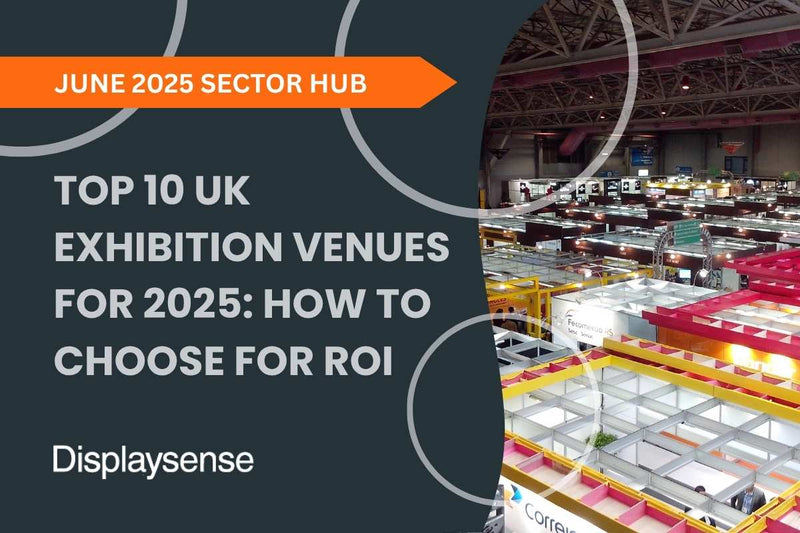What Is Visual Merchandising?

Every brand with a brick and mortar presence, whether that be high street, corner boutique or retail park, will tell you just how critically important their store environment and store front is. We can see in retail at the moment that it’s not only important to get it right but how difficult it is to keep up with the pace of changing consumer tastes and what their expectations are of a brand in the digital age.
In it’s simplest form, visual merchandising is a way of planning and designing a retail store environment, including the shop window, to attract people in and drive sales. Reading that out loud, it’s obviously not that simple to do or get right all the time, especially as the personality and values of the brand are also being put on show to the wandering masses of the high street; wandering masses who can be fickle at the best of times. Over the past 5-10 years however, there has been a rapidly changing trend in reduced footfall on the high street, partly down to stagnant wages and rising inflation but also because of the role the internet and technology is having on consumer expectations. According to data released by the British Retail Consortium “Online sales of non-food items have soared over the period between Dec 2012 and Dec 2018 to 24.1% of the total UK market�?. Businesses up and down the country are having to adapt themselves to meet this change in behaviour and that too means that visual merchandising as we know it has to change in line, leading to “online visual merchandiser�? type jobs being introduced to tackle the online shop window.
We can see with the introduction of Amazon Go, advances in the likes of augmented reality apps for in store browsing and even the oh so familiar click and collect, that retail environments are moving away from selling product to selling experiences. These aren’t just experiences that entertain us, these need to be experiences that make the life of a consumer easier and not just easy to purchase more products. The idea of giving a consumer a more well rounded experience isn’t just a nice to have, it’s a necessity in order to entice customers out from behind their desks and head in store to purchase. The purchase is of course important but brands with a high street presence have a chance to create a greater personal connection with customers, improving retention and grow market share.
Many retailers of course understand that it’s not a simple case of online vs offline and those that have a high street presence are rapidly looking at ways to create an experience by bringing the internet, technology and additional customer focused services in store. Staff empowered with tablets or self service checkouts were the first attempts at freshening up the traditional in store model but they don’t go far enough, resulting in a lot of brands joining forces or being acquired in order to maintain, grow and tap into broader new audiences. Patisserie Valerie basing itself inside some Debenhams stores and the likes of the acquisition of Argos by Sainsburys, are just examples of brands looking to bring people in through the door and keep them spell bound with food, secondary services and other bolt-ons that make life easier; something that is behind the success of online companies to date, as we are all looking for an easier life.
With more and more companies collaborating, it’s not just big brands and flashy gadgets, however that are drawing in the crowds. House of Fraser have been offering pop-up concession stands in their Manchester store so that the likes of local start-ups, which are popular with a mix of older and “millennial�? demographics, are given the opportunity to showcase their stock. Utilising their own data, an understanding of its customers and support from Irish tech company Popertee, HOF are taking an interesting approach to not only using digital data to change it’s in store environments but is also catering to the differences in its customers' local interests.
With all this in mind, where does that leave visual merchandising? The definition mentioned earlier is still true, however, the success of each store is reliant now more than ever on a forward-thinking brand that can not only empower each member of staff with the right tools but, more importantly, the flexibility to bring each individual store to life.
Visual merchandising refers to the techniques used for presenting products and laying out a store in the most effective way possible to boost sales and revenue. The goal is to attract and engage customers and encourage them to make a purchase. There has been an extensive amount of research done into visual merchandising and how to get it right. Ultimately, there are four essential components to keep in mind. So, what are the four elements of visual merchandising?
The four major elements are:
Let’s look at these in more detail...
Colour
Colour plays a huge role in visual merchandising. It’s vital to get right when choosing your store window displays, signage and in-store visuals. Lots of research has been done into colour psychology and how retailers can utilise it to their advantage.
Did you know that different colours encourage different emotions in shoppers? For example, bright colours such as red and orange grab attention and prompt impulse purchases, while blues and purples can create a soothing atmosphere or denote luxury. So, when choosing your branding, think carefully about colour associations and emotion.
Remember, one size doesn’t fit all when it comes to colour. Age and gender also play a role in colour psychology, so think carefully about your target demographic too. To learn more about the do’s and don’ts of colour, check out our blog on the psychology of successful retail design.
Landscaping
In visual merchandising, landscaping refers to elevating products to make them more noticeable to customers. For example, placing certain products higher than others on a display table will promote them over the ones underneath and let customers know this is your star offering. If you want to highlight a product range or specific item, use taller risers, blocks or plinths to showcase their significance and draw the eye to them.
Retailers typically use symmetrical or asymmetrical landscaping in-store. Symmetrical landscaping is great if you want customers to look at all the options displayed. In contrast, asymmetrical landscaping encourages attention to one specific area you want to stand out.
Storytelling
Since the rise of internet shopping, the way we shop in-store has changed. Retailers must offer a different experience to customers that they can’t find online – face-to-face contact and closer interaction with your brand. That’s why storytelling is one of the four major elements of visual merchandising. It helps to create a connection and leaves a memorable impression.
When storytelling, be clear about what you want to get across. What’s unique about your product or service? What sets you apart?
The aim should be to engage, entertain and educate your customers about your brand and your products. Tell them what your products will do for them and why they need them. From your window display to the lighting and layout, think about creative ways to get this message across.
Signage
Signage is another vital element of visual merchandising. Customers need to be able to find everything they need quickly and easily. If not, they’re likely to leave. When shop workers are busy, signs provide clear directions throughout your store. If done well, signage can tell your customers all they need to know about pricing and promotions and provide important information about products. Signs also prompt a call to action, for example, ‘pay here’.
To make the most of your signage, opt for:
- Outdoor signage, such as pavement signs, to capture the attention of window shoppers.
- Large elevated or wall-mounted signs detailing specific sections or ranges, so customers can easily navigate your store.
- Snap frames on the wall to showcase promotions and discounts.
- Small signs on product shelves with ‘best-seller’ or ‘employee favourite’ to encourage a purchase.
- When choosing your signage, remember to opt for bold colours and use clear typography and graphics to ensure they’re easily read and understood.
These four elements of visual merchandising go hand in hand. Done right, all these aspects work together to create a clear brand message, promote the upselling of your products and ultimately increase sales. From pavement to payment, these visual merchandising techniques will play a vital role in your customers’ journey through your store and their experience of your brand. For more on the importance of visual merchandising, read our blog: How Does Visual Merchandising Affect Your Store?.
Source – For more information regarding popup shops in House of Fraser https://www.manchestereveningnews.co.uk/business/debenhams-house-of-fraser-kendals-14476950
For more information regarding products at Displaysense, please call 01279 460460



